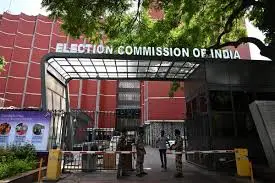EC to soon get death registration data electronically

Election Commission to Get Death Data Digitally, Aiming for Cleaner Voter Rolls
The Election Commission of India (ECI) is preparing to receive death registration data in digital format. This move is designed to improve the accuracy of voter lists across the country.
A Shift Towards Digital Accuracy
Until now, removing names of deceased voters depended on manual reports. These were usually submitted by families or local officials. Delays and mistakes were common, especially in rural areas. The new digital process will help correct such issues faster and more accurately.
Backed by Law
Recent changes to the Registration of Births and Deaths Act, 1969, make this update possible. The law now allows the Registrar General of India (RGI) to share death records with the EC. This step ensures better coordination between departments.
How It Works
Once a death is officially recorded, the data will be sent to the EC electronically. Booth Level Officers (BLOs) will verify the information on the ground before deleting the name. This ensures that no one is wrongly removed from the voter list.
Why It Matters
Clean electoral rolls are essential for fair elections. Keeping the names of deceased individuals on the list creates room for errors and fraud. By using official death data, the EC can prevent such problems.
Part of a Larger Plan
This is one of several reforms the EC is rolling out. The commission is also redesigning voter slips and improving its tech-based services. These steps aim to boost public trust and make elections more transparent.
a move aimed at enhancing the accuracy of India’s electoral rolls, the Election Commission of India (ECI) will soon begin receiving death registration data in digital format from the Registrar General of India (RGI). This development is expected to significantly reduce instances of deceased individuals remaining on the voter list—an issue that has long posed a challenge to the integrity of the electoral process.
A Tech-Driven Shift in Voter List Management
Until now, the removal of deceased voters from electoral rolls relied largely on manual reports submitted by families or local officials. This system often resulted in delays or inaccuracies, especially in rural areas or where death records were not promptly updated. By integrating digital death registration data directly into its voter list management process, the EC aims to automate and accelerate this cleanup.
Legal and Policy Foundation
The initiative is backed by recent amendments to the Registration of Births and Deaths Act, 1969. These changes authorize the sharing of such vital statistics between government departments. For the EC, this opens up the possibility of real-time updates to its records, improving the overall integrity of elections.
How It Will Work
Once a death is officially registered, the information will be digitally transmitted to the Election Commission’s system. Booth Level Officers (BLOs) will then conduct local verification before the name is formally removed from the voter list. This additional step ensures that no individual is mistakenly removed due to clerical or data errors.
Why It Matters
Accurate electoral rolls are foundational to any democracy. The presence of names of deceased individuals not only inflates the voter count but also creates opportunities for electoral malpractice. By tapping into a centralized, government-maintained source of death data, the EC is taking a critical step toward maintaining cleaner, more reliable voter lists.
Broader Reforms in Motion
This digital linkage is part of a broader modernization effort by the EC, which includes revamping voter information slips and adopting more tech-friendly services for both registration and verification. These changes are expected to improve transparency, voter confidence, and the overall efficiency of the electoral process.






